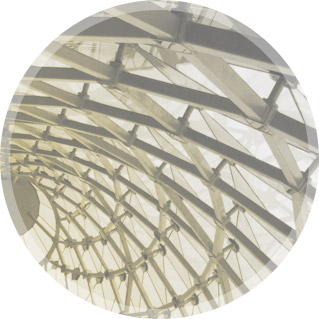The Ohio State University
Austin E. Knowlton School of Architecture
Architects in the 21st century will face significant challenges and exciting opportunities. Economic and environmental uncertainties will test the viability of established conventions and spur the invention of more productive alternatives. Diverse cultural constituencies will demand other ways to organize their daily lives and new symbols to represent themselves and their aspirations. Increasingly polarized debates regarding social equity and political responsibility will foreground architecture’s crucial role in safeguarding individual integrity and constructing civic identity.
As architectural culture reimagines its place in the world at large, it also will renegotiate its relationships within the academy. We must build better bridges to the natural sciences to increase the efficacy of existing technologies and to foster the invention of new ones with which to address pressing environmental and technical challenges. We must broker stronger collaborations with the social sciences to reinforce our role in organizing the intimacies of private life and the complexities of the public sphere. We must forge new alliances with the humanities to advance our field as an art form and to enhance the potential of architects as agents of meaningful cultural production. Above all, we must make stronger cases for what architects do and why we do it.

Setting
One of the nation's top-20 public universities, The Ohio State University's main campus is one of America's largest and most comprehensive. Located in Columbus, Ohio, the main campus is within 600 miles of two-thirds of the population of the United States. As a land-grant university, Ohio State has a physical presence throughout the state, with campuses and research centers located around Ohio.
Columbus is the 14th largest city in the country and the fastest-growing city in Ohio. Columbus offers a strong professional architectural community, the Wexner Center for the Arts, the Ohio Historical Society, the Columbus Museum of Art, the Columbus Symphony Orchestra, and a range of contemporary and historical architecture.
Vibrant and alive, Ohio's capital is known for its open attitude, smart style and entrepreneurial spirit. Columbus' blend of distinctive neighborhoods, dynamic nightlife and music, creative arts scene, original culinary experiences and wide array of festivals and attractions is made unforgettable by its outgoing locals who warmly welcome visitors. In Columbus, standing out doesn’t mean standing alone.
School Philosophy
The Architecture Section at the Knowlton School makes its case through form, the lingua franca of architectural culture and the fundamental medium of the field. In aesthetics as in politics, form determines who and what go where, when. The acts of spatial and temporal sorting that establish order and determine form are more commonly known as design. The conversations that explain the myriad decisions involved—as well as the hows and whys on which those decisions rest—constitute design’s discourse.
Architecture at Knowlton cultivates expertise in the design and discourse of form, transforming undergraduate students into well-rounded generalists and graduate students into well-informed specialists. Our faculty focus on the spatial, temporal, and rhetorical functions of form to equip our students with the technical knowledge as well as the political skill to make their case and move their work into the world. The rest unfolds from there.

Programs
The Master of Architecture program at the Knowlton School is dedicated to all aspects of this pursuit and is grounded in an understanding of architecture as a cultural enterprise. We are invested in the knowledge of architecture’s traditions through strengths in history and theory while we transform the discipline through technology and engagement with the world. Seminars in history and theory are supplemented by courses in systems, sustainability, structures and professional practice, reinforced by the school’s extensive fabrication and computing facilities. Most importantly, cultural breadth and technical depth are synthesized in the school’s intensive studio culture where students creatively engage real world issues. In addition, the program offers opportunities for internships and international travel and is able to provide more than half of our students with financial support.
The Master of Architecture degree at the Knowlton School has a single degree structure with a three-year sequence and two entry points. Students with non-architecture undergraduate degrees, and some continuing students, enter in the first year, which focuses on the development of the student’s critical, technical and aesthetic sensibility within the domain of architectural design. Students who have completed a four-year undergraduate degree from an NAAB-accredited program may be granted advanced placement to enter the second year on the basis of academic performance and portfolio review. The students then advance to the third year that concentrates on developing disciplinary expertise through advanced research. Students are helped in this endeavor by the Herbert Baumer Distinguished Visiting Professorship that is awarded annually to a prominent practitioner in the field of architecture. During the course of that academic year, the practitioner leads a graduate design studio at the Knowlton School. The practitioner also leads a seminar in conjunction with a regular Knowlton School faculty member that reviews the practitioners career - including an in-depth exploration of one project. This seminar results in a volume of the school’s Source Books in Architecture series. The practicioner also participates in the school’s Lecture Series.
Finally, instead of a traditional thesis, the Knowlton School's MArch program culminates with the Exit Review program. The Exit Reviews are a series of public presentations given by each graduating student during their last semester in the program. The process of the Exit Review, which constitutes a student’s Master Examination, diverges from the conventions of thesis in that each student is asked to pause from studio design production in order to both situate their work and more importantly their architectural ideas within the context of the larger flows of cultural history. They are asked to critically examine their own design agenda and to position it relative to larger disciplinary transformations occurring due to the evolving position of the Architect in society. The institutional goal is to have each student exit the program prepared to be an agent of change within the disciple. The School strongly believes that this process will prepare each student to be actively involved in what it means to be an Architect today.
In Ohio State’s undergraduate architecture program, students learn to develop abstract relationships and understand the impact of ideas based on the research and analysis of cultural, social, political, economic, and environmental contexts. The studio-based curriculum engages students individually and collaboratively as they propose design solutions and communicate those solutions through a range of media: digital rendering, model making, full-scale fabrication, writing, and public presentations. Additionally, students gain understanding of the technical aspects of design through experimentation with materials, structures, and building systems.
Students entering the program begin with foundation courses including a hands-on design studio which results in the production of a portfolio. A sequence of six studios during the second, third, and fourth years of the program build on scale and complexity over a range of building types. These studios of 12-15 students are led by faculty and practicing architects. During the summer, students can participate in the School’s numerous travel abroad programs or have internship experiences.
The pre-professional Bachelor of Science in architecture prepares students for a range of career options. Many students continue their studies in graduate programs; typically students attend any accredited Master of Architecture program, but some students build on their architecture foundation in related disciplines. Ohio State students have an outstanding track record in gaining admission to the nation’s best architecture graduate programs. Other students pursue employment opportunities in the architectural/design industries, the arts, business, or public service.

of Focus
1. Cross-Cultural Contexts > Human Experiences
2. Digital Fabrication & Technology
3. History | Theory | Criticism
4. Art & Design
5. Digital Design & Visualization
6. Building Technologies
7. Materials and Construction

Opportunities

Facilities

Policies
Transfer Policies
Transfer students who plan to pursue a major in architecture, city and regional planning or landscape architecture should apply directly to The Ohio State University. Visit the Undergraduate Admissions website for specific information about admissions criteria, application requirements and application deadlines. http://apply.osu.edu, http://undergrad.osu.edu
University Admissions will review coursework and GPA(s) from all previous post-secondary institutions attended. A minimum GPA of 2.5 or higher from previous institutions is required to enter the Knowlton School as a transfer student. (Students who do not meet the 2.5 GPA requirement will enter the university through University Exploration, but may still enroll in prerequisite courses and can still apply to one of Knowlton’s majors. http://exploration.osu.edu)



